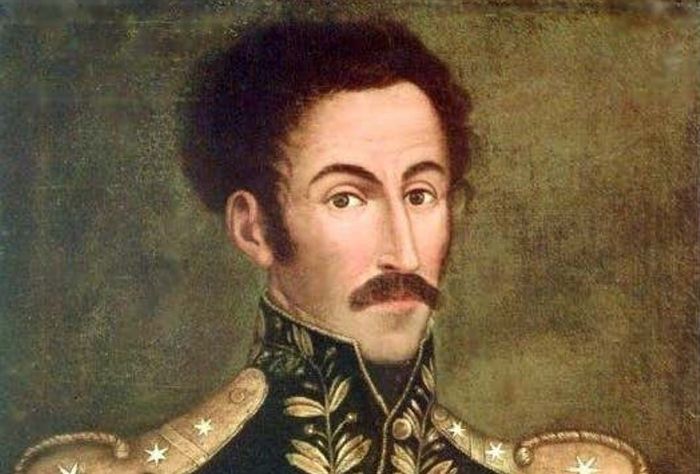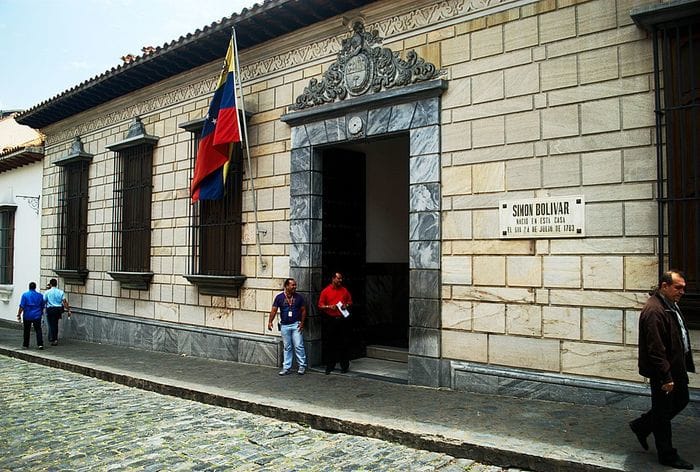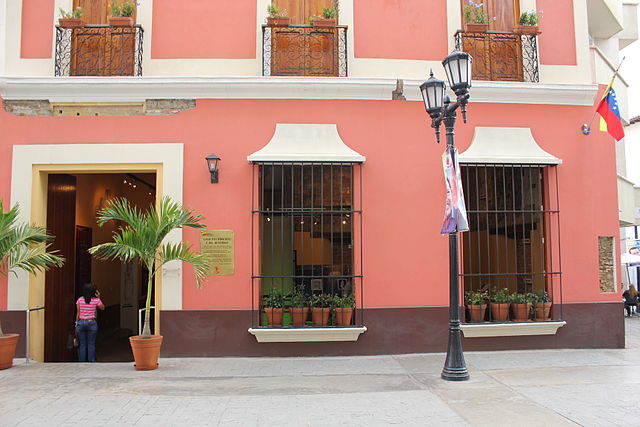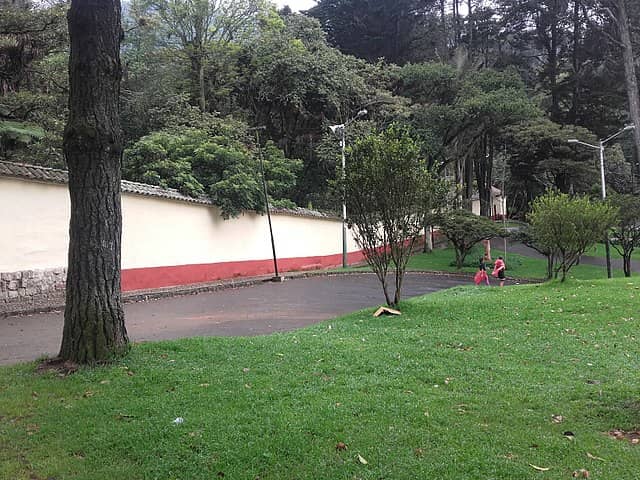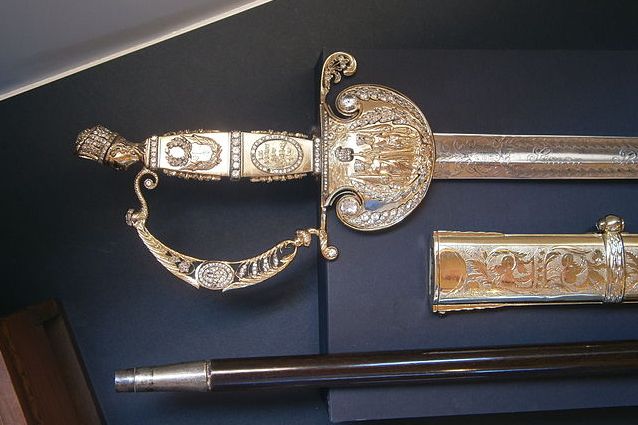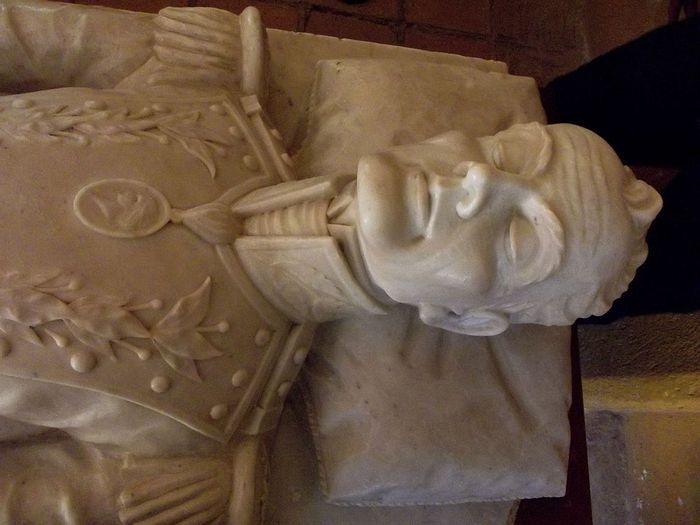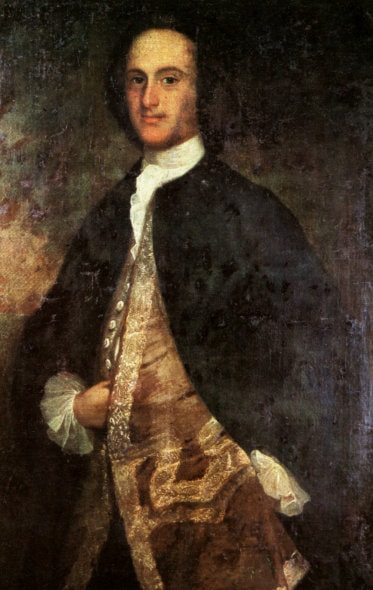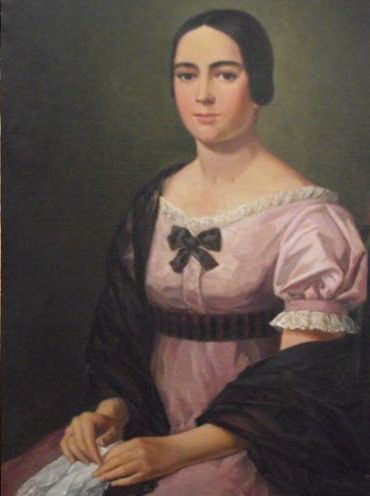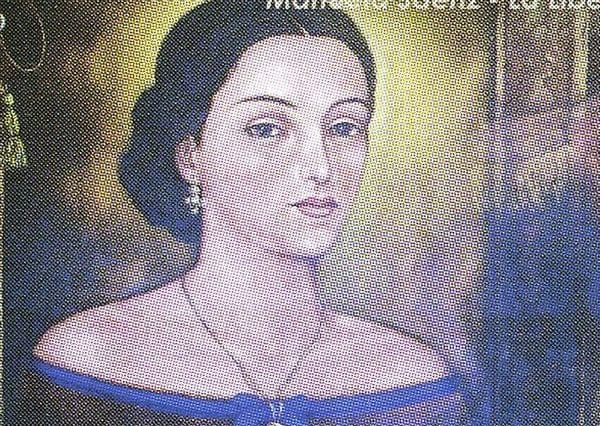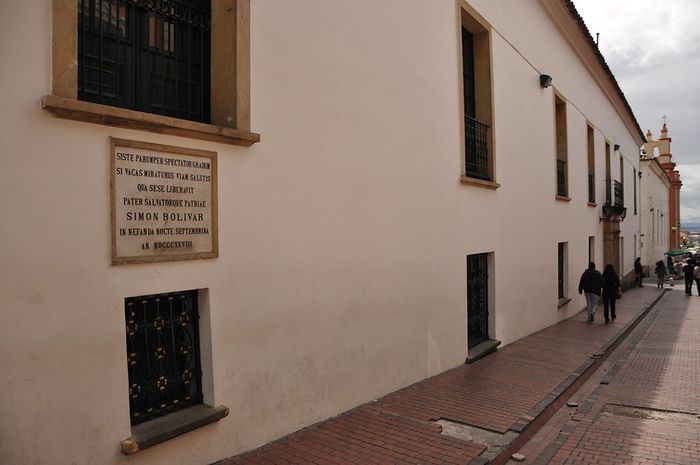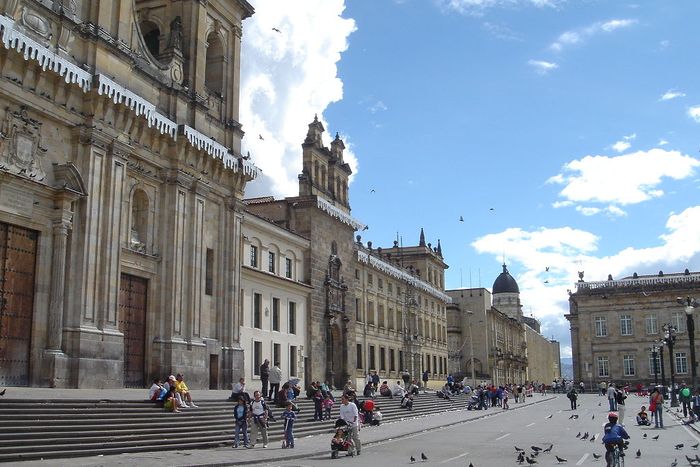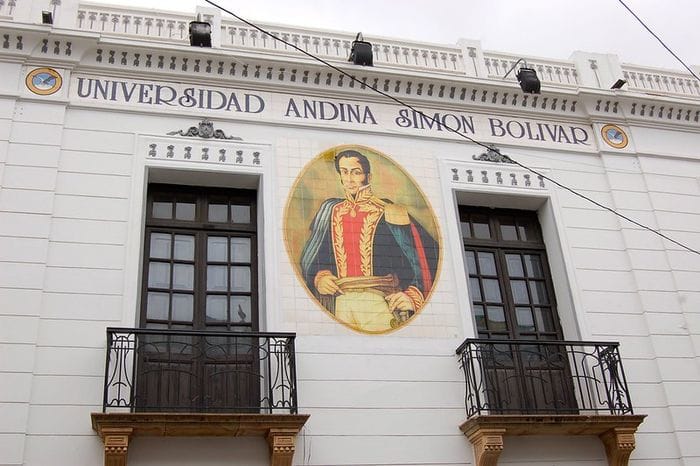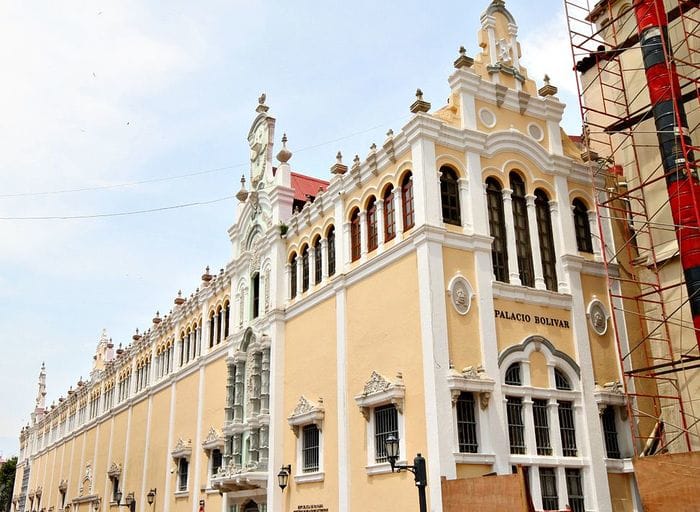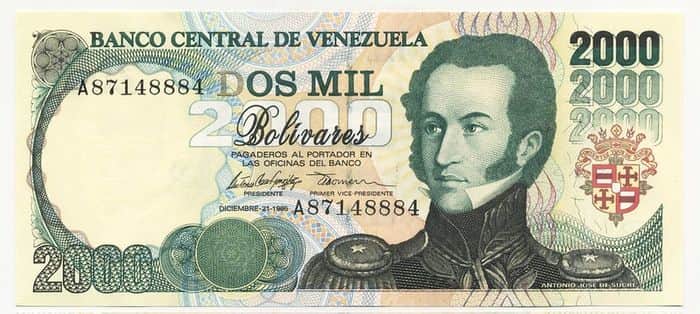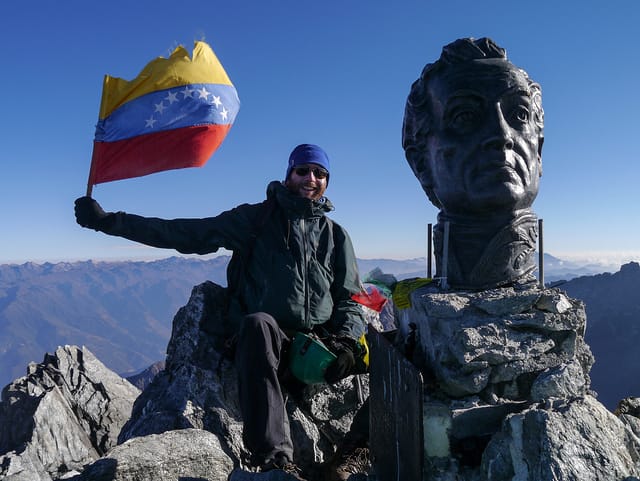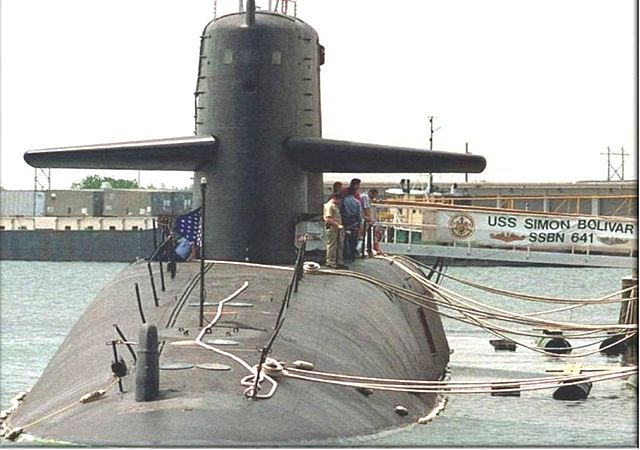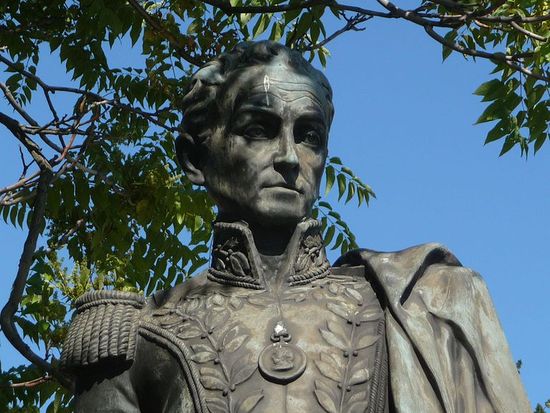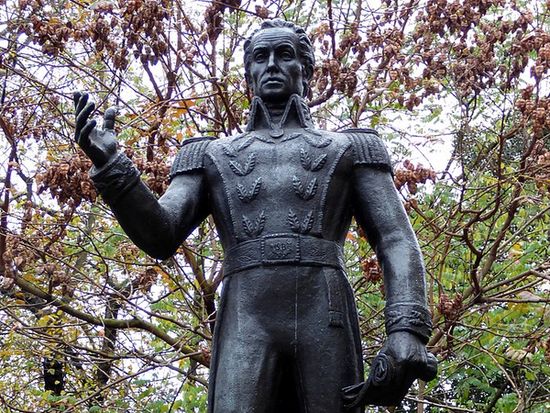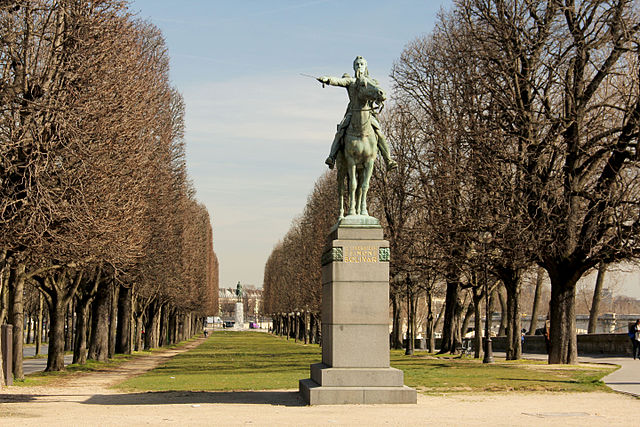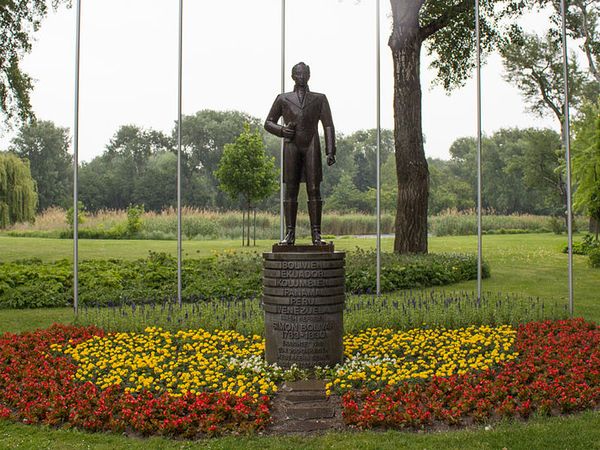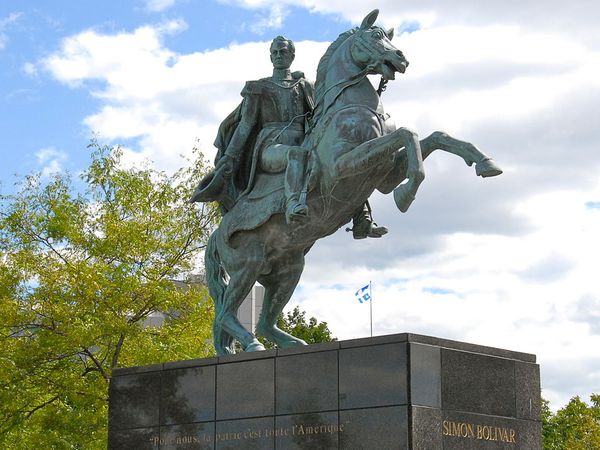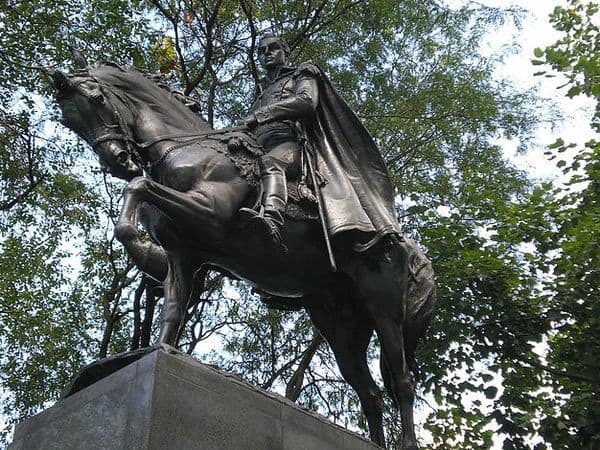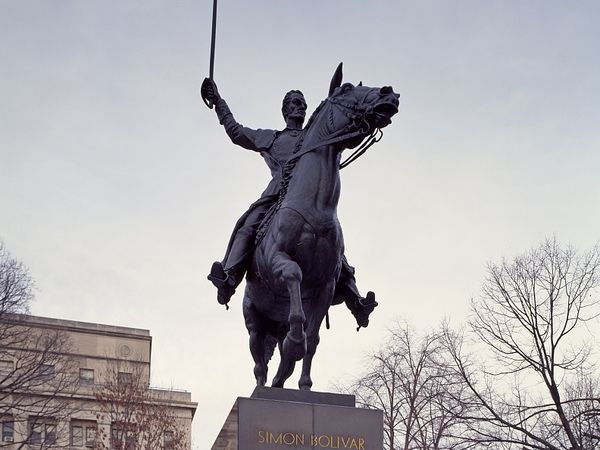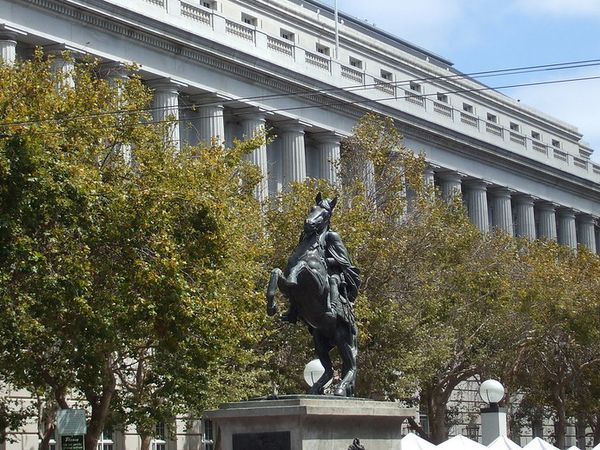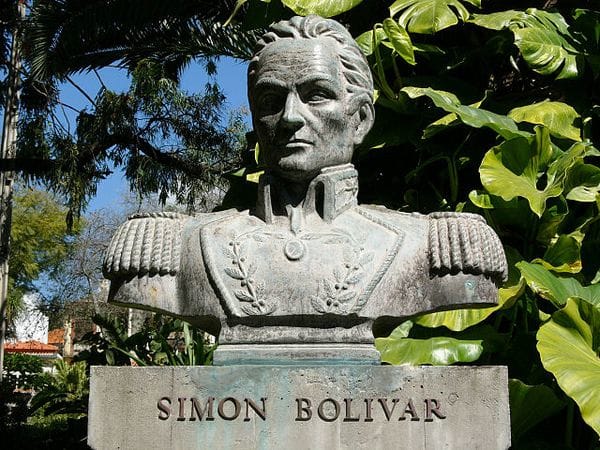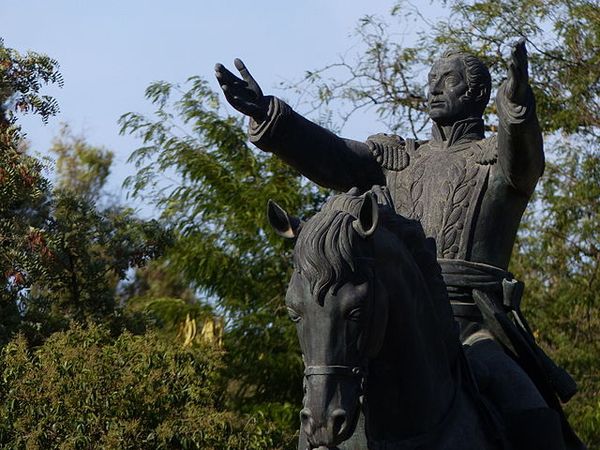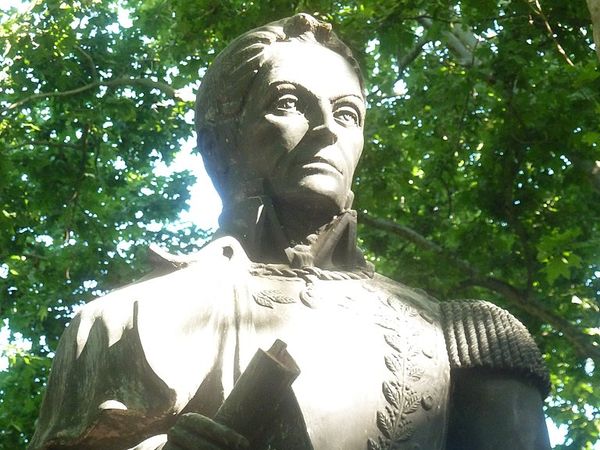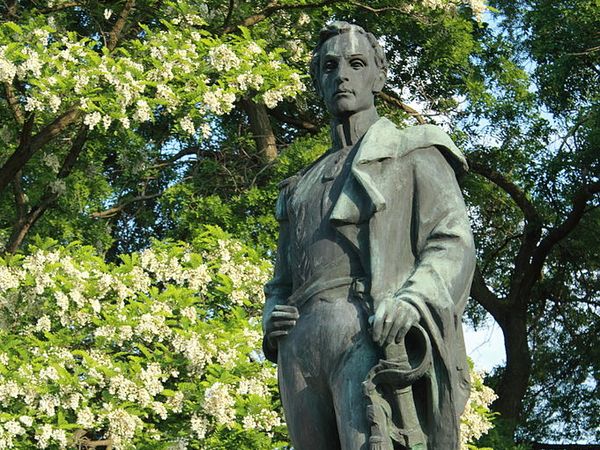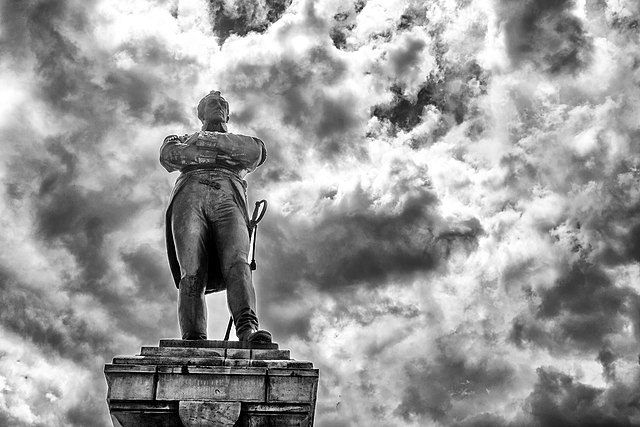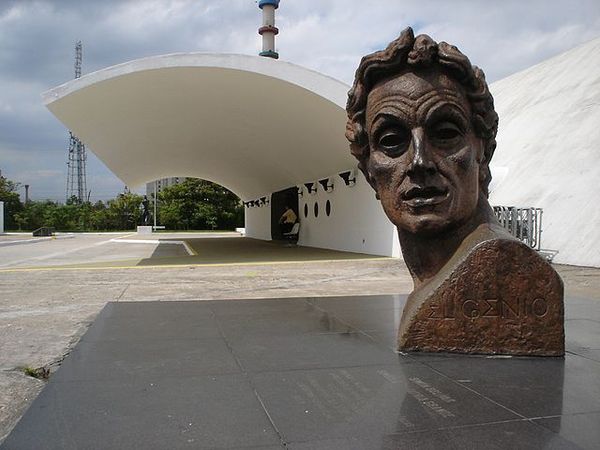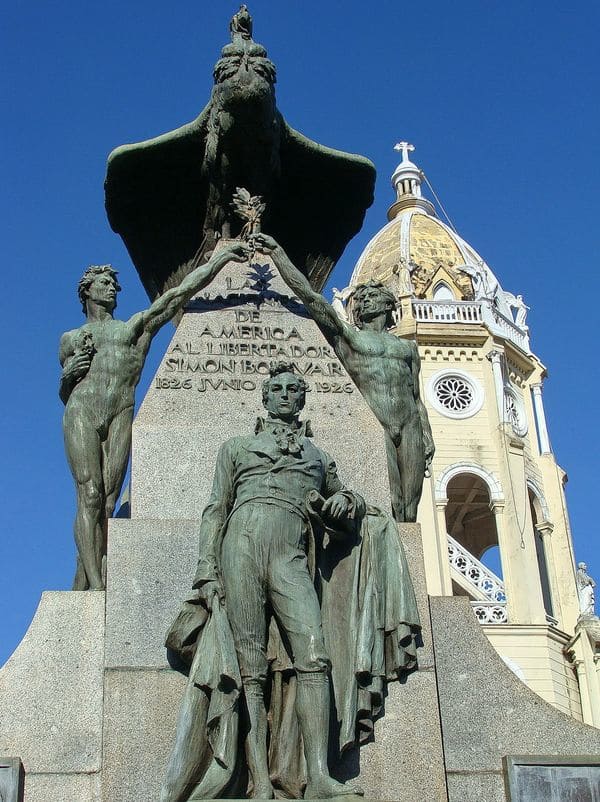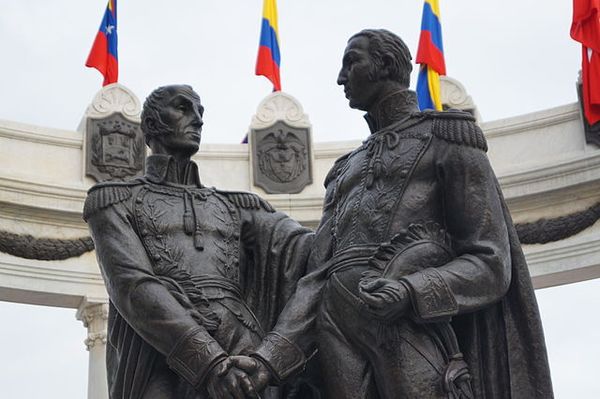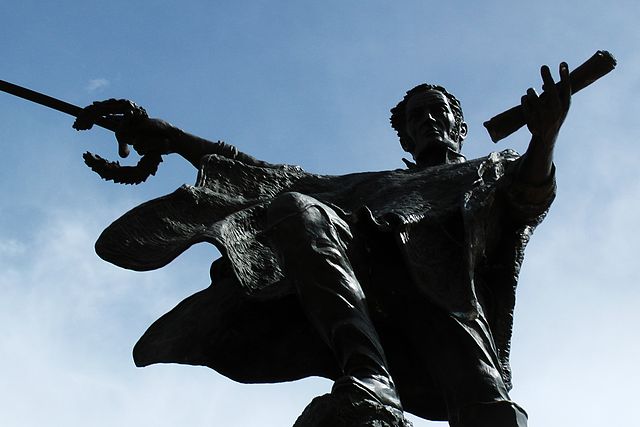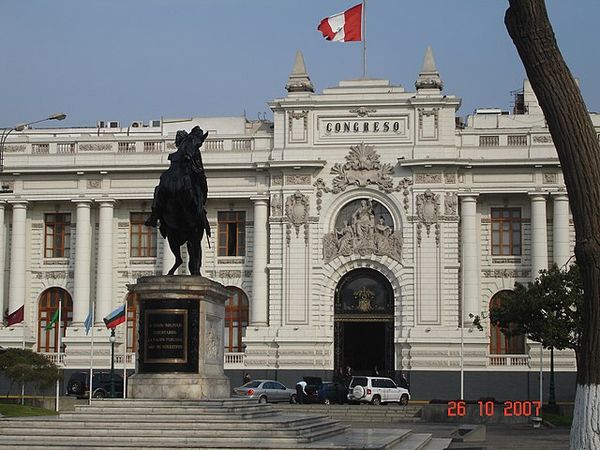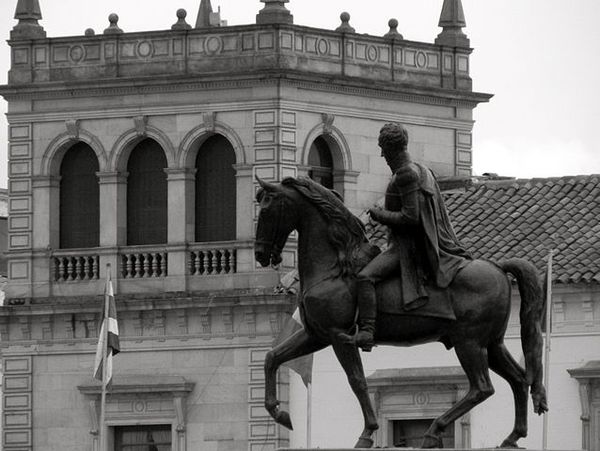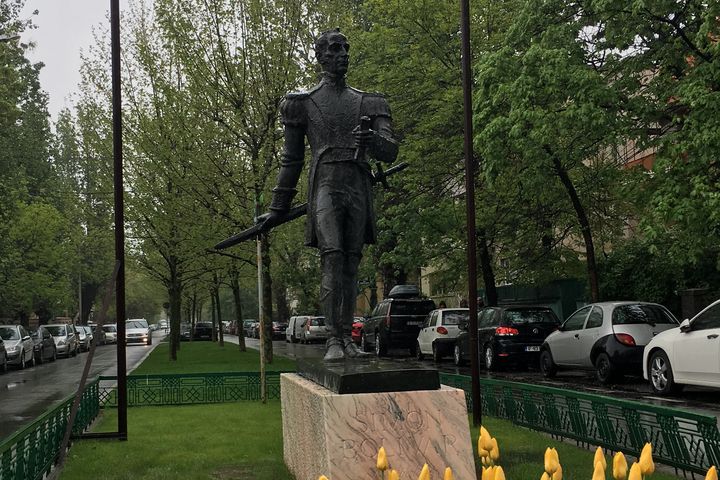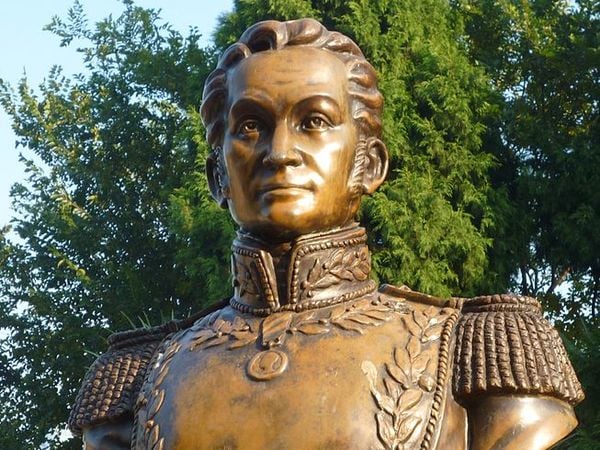Simon Bolivar was like Washington and Lincoln wrapped up in one. He freed five South American countries from Spain. And then, he abolished slavery. All in one sweep move. Well, not really. It took him several tries.
Nevertheless, in South America, Simon Bolivar is considered a superhero. Here are 15 facts about his life so you get to know him too:
Fact 1: Simon Bolivar was born wealthy and died poor
Both of Simon Bolivar’s parents were distinguished and very rich. They owned gold, silver, and copper mines; and many large plantations and properties.
His family had been accumulating wealth for two centuries in the Americas by the time Simon was born in Caracas, Venezuela, in 1783.
Yet, Simon did not inherit the business-savvy of his ancestors. He was not good at making money; he was only great at spending it.
In his youth, Simon traveled several times to Europe in style, accompanied by servants. In Paris, he lived for months in the most expensive hotel… in the most expensive rooms. He had his own carriage and a box at the opera.
Back in his natal Venezuela, he was known for his expensive tastes. He wore imported perfumes in abundance, dressed sharply, bought jewels for his beloved, and entertained generously. Still, all that would not have been enough to dry up his vast fortune.
The thing is, Simon Bolivar, like other South American patriots, funded the independence wars out of his own pocket. Furthermore, he liked giving his plantations and properties to his officers as rewards.
By the end of his shortish life (47), Simon had given all his money and most of his properties away. So he no longer had income sources.
And the freer of South America died in exile, poor, and living from the generosity of others.
But why is Simon famous? Read next: Simon Bolivar’s Four Greatest Achievements
Fact 2: Simon Bolivar lost both his parents before he was ten
Simon’s father was Juan Vicente de Bolivar, the mayor of his city. Juan Vicente was also a colonel in the Battalion of White Volunteers of the Aragua Valley.
But Simon did not remember him since the colonel died when Simon was only two.
And Simon’s mother, Maria Concepcion, died when Simon was nine.
After his mother died, Simon was split from his siblings. His brother was sent to military school. His two sisters were married off to wealthy relatives. And Simon, the youngest, went to live with Feliciano Palacios, his maternal grandfather. Feliciano was a kind man who loved Simon. But the blows kept coming.
Feliciano died a year later. And the boy now became the guard of his uncle Carlos Palacios. Carlos was single, tough and, by all accounts, did not have an easy relationship with his nephew.
Fact 3: Simon lived eight years in Europe

When Simon was 15, his uncle sent him to study abroad in Europe. Most Venezuelan boys of his status did, but perhaps his uncle also wanted to get rid of Simon.
Simon spent almost four years in Europe. Most of that time, he lived in Madrid, Spain. There he learned languages, humanistic subjects, and military strategy.
He returned to Venezuela when he was 19. But within a year, he was back in Europe for four more years.
This time, he lived in Italy and in sophisticated Paris, France, where he attended one party after another and picked up revolutionary ideas.
During that second trip, Simon paid more attention to politics. He saw Napoleon’s coronation in Paris. And he also mingled with prominent people like German explorer Alexander von Humboldt.
Humboldt had traveled extensively through South America. And he told Simon that a strong leader could free the colonies from Spain. Humboldt just never imagined he was planting a seed and that the party-loving young man he was speaking to would be that leader.
At the end of that second trip, Simon went to Rome with one of his friends. One day, the tourists were standing on top of a hill, overlooking the city, when Simon felt inspired. He reflected that the ancient Romans had dethroned their monarchy and established a great republic (509 BC), and that Venezuelans could do the same. And right then and there, Simon vowed to free his fatherland from the Spanish crown and to turn it into a republic.
Fact 4: At home, Simon was a second-class citizen

Despite how wealthy his family was, Simon was a second-class citizen in Venezuela because he was a Criollo.
A Criollo, in the Spanish system, was a full-blooded European who had the bad luck of being born in the colonies.
And the Spanish crown did not trust the Criollos because it believed that the Criollos could revolt. So the legal system kept them from having too much power. For example, the Criollos were banned from high appointments in the government, the military, and the Church. Those positions were reserved for men born in Spain.
The Criollos, also called “Americans,” could only be appointed to middle positions like mayor or colonel. And they could own land and trade some products.
Simon bitterly complains about it in a famous letter he wrote from Jamaica in 1819: “Americans, under the Spanish system now in vigor, have in society no other place than that of serfs fit for work, and, at the most, that of simple consumers. (…)
In short, do you want to know what was our lot? The fields, in which to cultivate crops (…); the solitary plains, to breed cattle; the deserts, to hunt the wild beasts; the bosom of the earth, to extract gold, with which that avaricious country [Spain] was never satisfied.
So negative was our existence that I can find nothing comparable in any other civilized society. (…)
We were never viceroys or governors except by very extraordinary reasons; archbishops and bishops, seldom; ambassadors, never; military men, only as subordinates; nobles, without privileges; lastly, we were neither magistrates nor financiers, and hardly merchants. (…)
Those born in America have been despoiled of their constitutional rights. (…)”
Read also: Bet You Didn’t Know These 9 Royals Are South Americans
Fact 5: Simon had energy to spare

His contemporaries said Simon had an overabundance of energy. Even as an adult, he would skip, jump, or run when walking with someone. He also loved riding horses, swimming, and military activities. And he was an accomplished dancer who could dance for hours, sometimes on top of tables.
That excess energy served him well. For years, he fought the Spaniards in South America. In his campaigns, he covered three times more territory on horseback than Napoleon and twice as much as Alexander the Great (about 56,000 mi / 90,000 km).
He also fought in more than 100 battles himself.
Fact 6: Simon Bolivar had a fiery temper
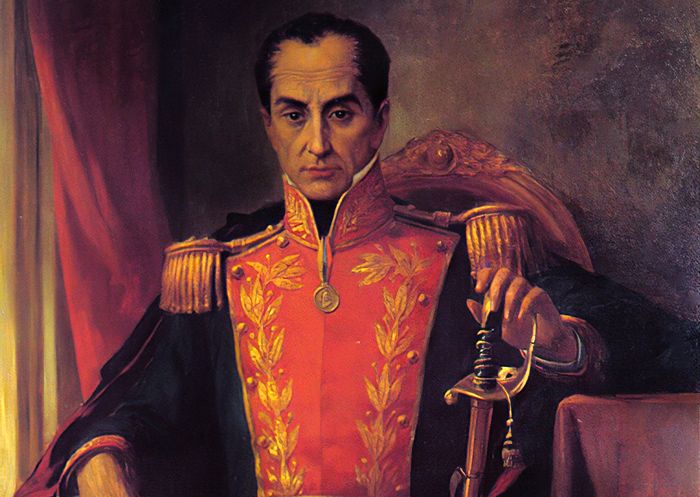
Simon had a short fuse. But moments later, he had forgotten all about his temper tantrum and carried on as if nothing had happened.
He was also impulsive, a trait Simon considered both one of his best characteristics and one of his flaws.
Those who disliked him found him too rash and authoritarian.
And all who knew him agreed he was passionate. Simon did not do things half-way.
Fact 7: Simon Bolivar was a womanizer
His contemporaries agree that Bolivar was nothing special to look at. They describe him as short and skinny and say his face was common. Yet women found him irresistible.

When young Simon was studying in Madrid, he met Maria Teresa del Toro, a Spanish girl who was the niece of two marquises. They fell madly in love.
After a two-year courtship, the happy couple got married. They traveled to Venezuela to settle there. But just eight months into the marriage, Maria Teresa caught yellow fever and died.
Simon was devastated. The 19-year-old widower vowed to never marry again.
He left for Europe and began a dissipated life filled with parties and women. Simon had hundreds of lovers after Maria Teresa’s death, but most of his relationships were short-lived. He enjoyed the flirting, the flings, the passion, yet he did not want to fall in love again.
Simon kept his word and never remarried. Yet his heart eventually betrayed him. He fell passionately in love once more, in his late thirties, with Manuela Saenz.
Manuela was a Criolla like him. She was the daughter of wealthy landowners from Ecuador. And like him, she was committed to the independence movement.
Manuela was as passionate and fiery as Simon, and she adored him. They were in an open relationship for 8 years until Simon’s death.
When Manuela found out he had died, she tried to kill herself.
More on Simon: This is how Simon Bolivar really looked like according to his death mask
Fact 8: Simon Bolivar had a way with words

Aside from his military skills, Simon is also remembered for his letters and speeches.
In his speeches, he was clear, grandiose, and inspirational. So as a general, he could easily rouse his troops to action.
He also wrote more than 10,000 letters that he sent to friends, family, lovers, supporters, and political acquaintances in Europe and the Americas.
In most of the letters, he explains his political thought. While in the ones he sends to his lovers, he gives free rein to his passion and romanticism.
All of them are widely admired for their style. If he had not chosen a military life, Simon could have been a writer.
Fact 9: Simon was close to three of his slaves

Hipolita was an enslaved African woman. She worked for the Bolivars. Hipolita was Simon’s wet nurse and took care of him throughout his childhood -even more so after his mother died.
When the general was an adult, he called her “my mother and father” and “the only mother I have ever known.”
Simon was emotionally close to two other enslaved people of his household. One was Matea, the other, Dionisio, Hipolita’s son. Both were about his age, and the trio grew up playing together. They were friends for the rest of their lives.
Dionisio became a sergeant in Simon’s army. And Hipolita and Matea chose to keep living with the Bolivars after Simon freed them.
Fact 10: Simon Bolivar freed 5 countries
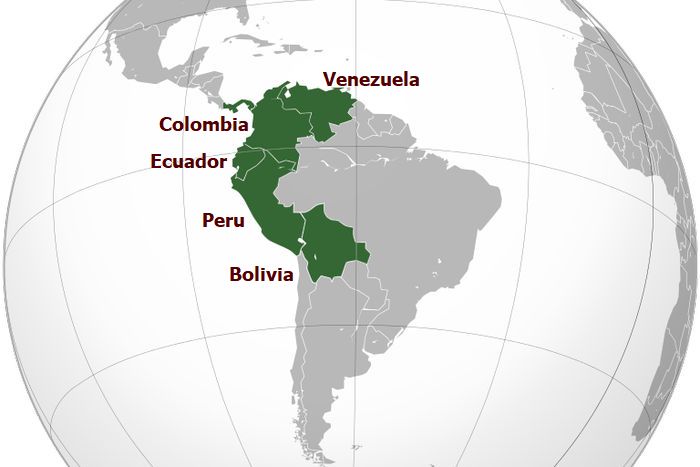
Simon wanted to see the Americas free from Spanish rule.
He first tried to free his country, Venezuela, several times, but failed. So when he saw the opportunity to beat the royalists in neighboring Colombia, he went for it, and succeeded.
He then rode back to Venezuela and freed it for good. Since he was now in a roll, he freed Ecuador, Peru, and Bolivia.
The feat earned him the nickname of The Liberator.
You may also like: These Are the 8 Most Spoken Languages in the Americas -and You Won’t Guess Half of Them
Fact 11: The territory Simon freed is twice the size of the original U.S.
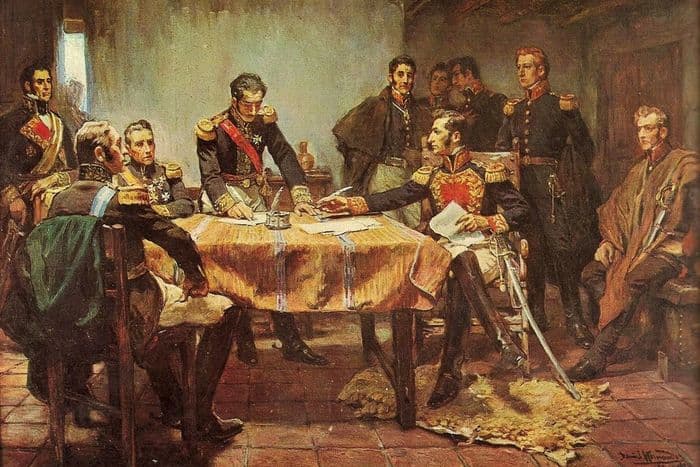
Simon Bolivar freed more than 1’891,901 mi² / 4’900,000 km².
For comparison, that is twice the size of Napoleon’s empire (810,000 mi2 / 2,100,000 km2 ). It is also twice the size of the United States when it won its independence in 1783 (800,000 mi² / 2’071,990 km²).
Fact 12: Simon Bolivar abolished slavery
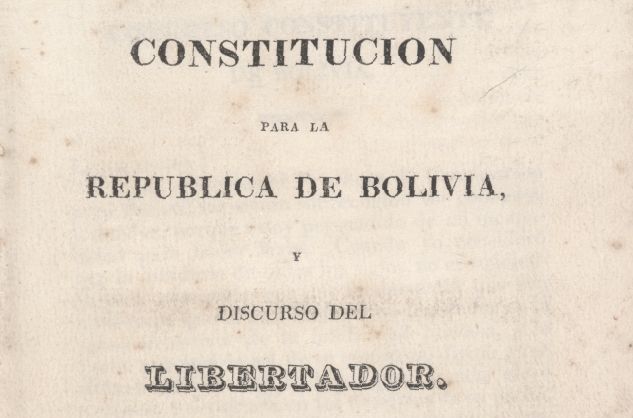
Simon Bolivar tried to abolish slavery in all the countries he freed.
He succeeded in Bolivia since he wrote their Constitution. In his project for the Constitution, he stated:
“Slavery is the infraction of all laws. (…) [slavery] is the most striking violation of human dignity. One man owned by another! A man a property! (…) An image of God under the yoke, like a brute! (…) No one can break the saintly dogma of equality (…) God has destined man to freedom.”
The abolition took longer in the countries that relied heavily on slave labor -like Venezuela. After several unsuccessful attempts to end slavery, Simon and the other patriots agreed to abolish it in steps. Every child born from a slave after 1821 would be free and receive an education, and no new slaves were to be imported. That way, the slave population would diminish.
Within 30 years of independence, slavery was fully abolished in northern South America.
Check out: 7 Unlucky European Aristocrats Who Were Enslaved
Fact 13: Simon Bolivar survived several assassination attempts
Luck was definitely on his side, for Simon Bolivar survived several assassination attempts. Two of them were really close calls.
In 1815, Simon had exiled himself in Jamaica after one of his bids to free Venezuela had failed. And since the Spanish Crown had confiscated all his properties, he was staying at a cheap inn.
A royalist bribed Simon’s slave, Pio, to kill him. So in the middle of the night, Pio approached Simon’s hammock -Simon loved hammocks. And he thrust his knife twice into the neck of the man sleeping there, killing him. Except the victim was not Simon.
Earlier that night, Simon had run into a friend who offered him better accommodations. The general had taken him up on the offer. And one of Simon’s officers had decided to sleep on Simon’s empty hammock.
The second dramatic attempt happened when Simon had already freed the colonies. He had turned the territories into one big republic called Gran Colombia. And Simon was its president.
In 1828, some of his supporters declared him a dictator. The move did not sit well with many who believed he wanted to become king.
Soon after, 38 armed men burst at night into the presidential palace of Bogota, in Colombia. Simon was sleeping with Manuela. They heard the noise and knew the intruders were coming to kill him, so fearsome Manuela took charge.
She urged Simon to flee through a window, while she angrily faced the conspirators.
Simon spent the next eight hours or so hiding under a bridge, in the rain. After that, he used to call Manuela “the Liberator of the Liberator.”
Fact 14: Karl Marx was not a fan of Simon Bolivar

Simon had plenty of enemies both during his lifetime and afterwards.
Among the critics was the famous German communist Karl Marx. Marx thought Bolivar was a “false liberator who merely sought to preserve the power of the old Creole nobility to which he belonged.” And that was one of the nicest things he wrote about him.
On the other hand, U.S. President Harry Truman was team Bolivar. He even hung Simon’s picture in the Oval Office, on the most prominent spot.
Fact 15: Not one but two countries are named after Simon Bolivar
Two of the countries Bolivar freed are named after him: the Bolivarian Republic of Venezuela and Bolivia. Their currencies also have his name.
There are avenues, airports, universities, provinces, and innumerable objects and places around the world named after Bolivar.
In Paris, France, both an avenue and a metro station bear his name.
And in the United States, at least twelve towns are called Bolivar. One is in West Virginia, others in Tennessee, Alabama, Georgia, Ohio, Oregon, Missouri, Texas; there are two Bolivars in New York, and two more in Indiana; plus the Bolivar Peninsula in Texas, and Bolivar County in Mississippi.
The U.S. also has a submarine named after the South American hero, the USS Simon Bolivar.
And even a minor planet, the 712 Boliviana discovered by a German astronomer, was named after Simon.
Fact 16: You can bump into Simon’s statue almost anywhere in the Western Hemisphere
Next time you travel, you can play “find Bolivar’s statue.” You are sure to succeed in cities like New York, Houston, New Orleans, Missouri, Miami, Orlando, Paris, London, Barcelona, Brussels, Vienna, Berlin, Hamburg, Prague, Sofia, and Bucharest, to name a few.
You can also play the game in Asia and Africa. His statue stands in squares from New Delhi and Tehran to Algiers. Just take a look.
More Articles
